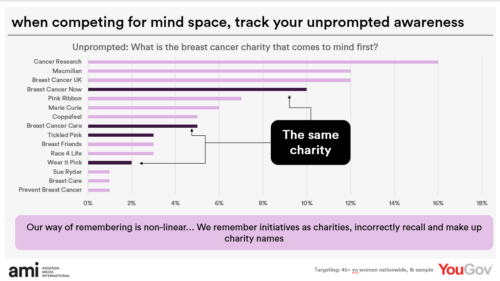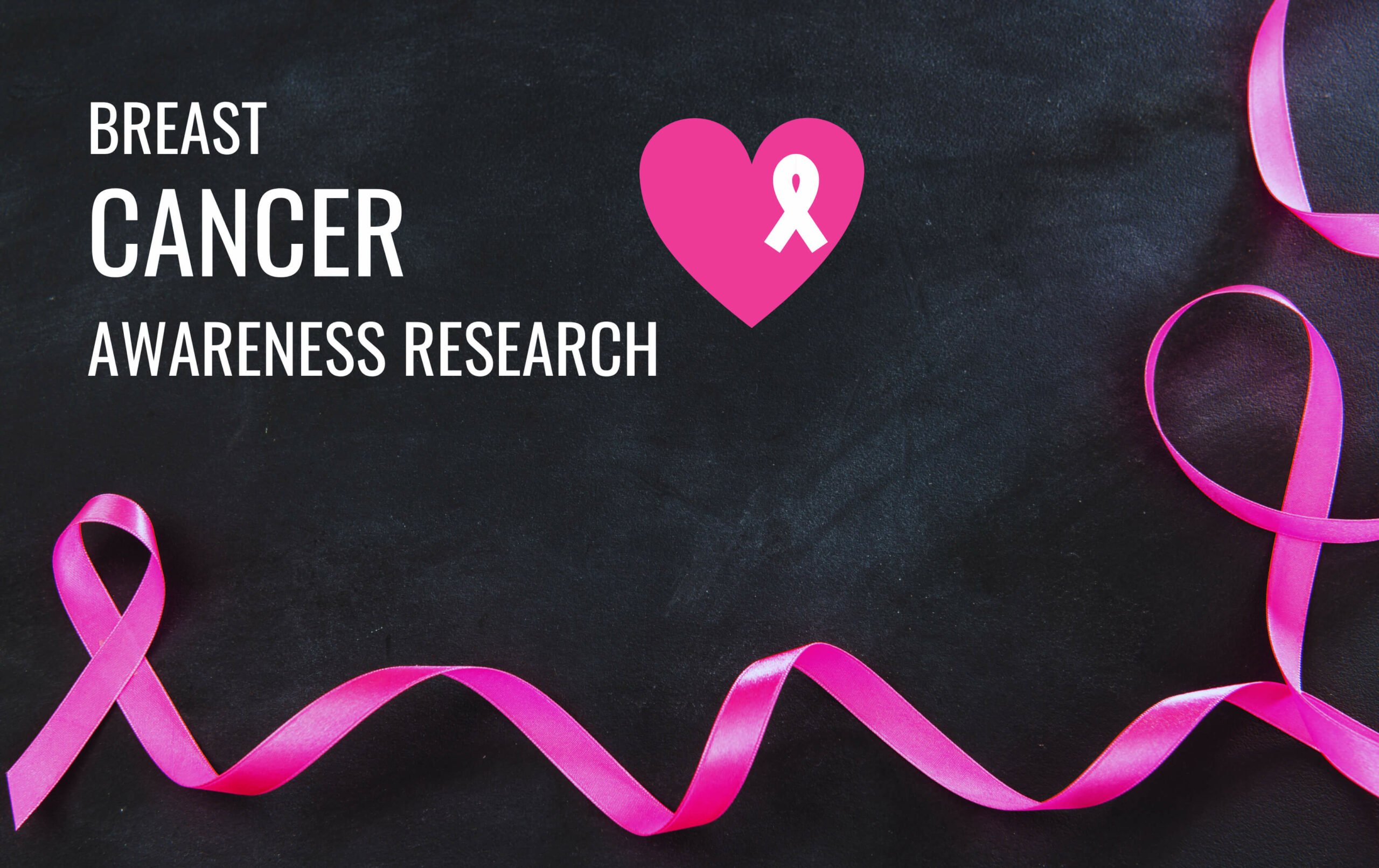Introduction
In January (2024, in case you are visiting us from the future), we conducted some research for one of our cancer charity clients. The research brought up some interesting considerations about consumer memory structures, brand awareness and how this is impacted by market composition. While the research was done for a breast cancer charity, the thinking can be applied to the broader charity landscape.
The real talk on breast cancer charity brand recall and awareness
We had been working in the breast cancer charity space for almost a decade and had been able to watch the sector grow and consolidate. As competitors got subsumed through mergers and partnerships, the perspective on marketing competition had also shifted. We discovered that none of the competitors our client was measuring itself against were known for breast cancer support – they were all bigger or better-known charities from the general cancer charity field.
Don’t get me wrong, it is important to look up to other businesses within your industry, to measure yourself against the very best and to consider how you could do better. What was missing in this particular case was the understanding of consumer perspective. Although the sector shed its crowded structure and one charity emerged as the dominant one, consumer brand recall could not have shifted as fast.
What did we do?
To test this hypothesis, we ran a YouGov survey, targeting 45+ year old women living in the UK. As this audience is the main at-risk group of getting breast cancer, their keenness for involvement in charitable activity and awareness of breast cancer charities tends to be greater.
Insights from our YouGov survey
These are our thoughts and findings:
1. How unique are you compared to your industry?
Most breast cancer charities have “breast cancer” in the name, pink colours dominate, and there are even more initiatives to remember, such as Wear It Pink or Pink Ribbon Walk. In this busy broth of different yet related activities and messages you might end up competing against yourself.
When asked to list breast cancer charities that come to mind first, 35% of respondents who were able to list a charity named those that do not specialise in breast cancer support. Further 6% listed charity initiatives instead of charities and 5% listed charities that no longer exist or have been rebranded.
2. Keep an eye on unprompted awareness.
If you are in an oversaturated category and have not yet achieved sufficient distinctiveness to stand out, using prompted awareness as the main measure of brand recall would give you a false sense of security. This is because people may not actually be thinking of your brand when clicking your name. Even large market share may not shield you from this (especially in a smaller market), although it will certainly help your awareness grow faster.
69% of respondents could not list a single breast cancer charity, 55% of whom stated that they know a few but cannot recall their names. Only 10% of respondents who said they could name a breast cancer charity named the biggest breast cancer charity as the first one that came to mind.
3. Awareness of the brand or awareness of the cause?
One of the reasons for lack of brand distinctiveness in the breast cancer charity sector could be due to the focus on the cause. Of course, this is the reason why these charities exist in the first place, and it should be communicated, but a cause is not a USP. The charity’s approach to the cause can become a USP though.

Embracing the challenge: strategies moving forward
While multiple research studies have shown that combining sadness with hope in charity ads works best to inspire charitable giving, this universal strategy resulted in a lot of charities adopting identical tone of voice. As a result, their ads became harder to differentiate. Simple fixes can go a long way in helping to build brand recall even in such a crowded environment. Consider how your BA and DR creative could be better streamlined and learn from each other’s successes. Ensuring consistency of branding and strong logo visibility across all media assets is an easy first fix. Media does not work in a silo; your DR creative could be unexpectedly good at fortifying brand awareness!
We’ve come a long way, but there’s still much to do in ensuring breast cancer charities stand out in this busy world. By focusing on what makes each charity unique and ensuring our messaging hits home, we can start to close the gap in public awareness.
We hope you found this useful. Reach out to us for a chat if you would like to know more.


